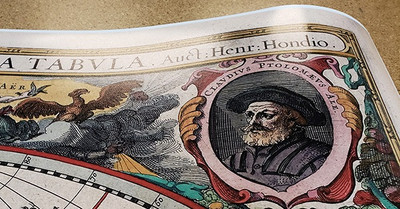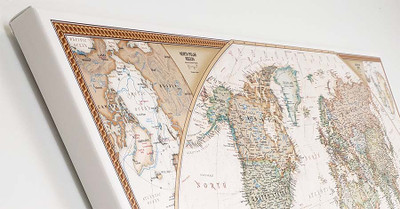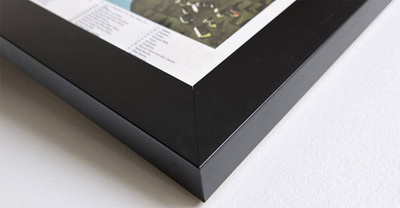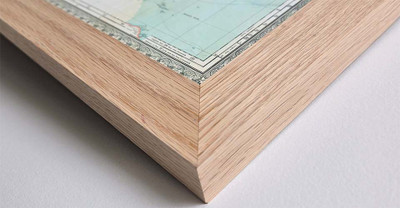
Historical Map - Brandon, Vermont - 1890
Description
This view of Brandon, Vermont captures the town as it appeared at the end of the nineteenth century, a century that had brought growth and prosperity to the town. Settled in the 1770's, the town of Brandon was called Neshobe in its early days. Today Brandon is home to the Brandon Historic District, prized for its well preserved examples of Victorian architecture and listed on the National Register of Historic Places.
Following is a description written by Mrs. Augusta Kellogg in 1899:
"The surface of the town is generally level. The Green Mountains lie along the east line, presenting some lofty summits while to the west is the churchill-house-inn-streamsmaller Taconic Range, which ends apparently in the Sudbury area. The principal streams are Otter Creek, which runs through the town from south to north, and the Mill or Neshobe River, which rises among the mountains in Goshen and enters the town from the east. At the foot of the mountains, the Mill or Neshobe River receives the waters of a small pond, called Spring Pond and becomes a considerable mill stream.���
Features numbered & lettered references to the following locations:
Corona Marble Co..br> Frozen Well House.
Baptist Church.
Button's Hardware Store.
St. Thomas' Episcopal Church.
Town Hall.
Hose House.
Graded School.
First National Bank.
Post Office.
Electric Light Co..
Brandon Marble Manufacturing Co., T. J. Johnstone, Proprietor.
Brandon National Bank.
Briggs Block.
Cahee's Grist Mill.
Gipson's Saw Mill and Lumber Yard.
Congregational Church.
Methodist Church.
The Brandon House.
The Douglas House.
Vermont Central Rail Road Depot.
Old Roman Catholic Church.
Roman Catholic Church of our Lady of Good Help.
Parochial School.
Brandon Machine Shop.
Florence Creamery Co..
Birthplace of Stephen A. Douglas.
Materials
Archival Paper

Premium fine art paper that provides accurate color reproduction with high-contrast, high-resolution print output and maximum image permanence. A high-quality print ready for framing.
More
- Museum quality paper for high-quality fine art.
- Ultra smooth, neutral white matte finish.
- Heavy-weight 230 gsm, 9.5 mil thickness.
- Printed with pigment inks for longer print life and enhanced fade resistance.
- Pigment based Canon LUCIA inks provide smooth tones and rich colors in fine, precise detail.
Luster Photo Paper

A premium semi-gloss photo paper with a subtle texture that produces a vivid, richly detailed print. This material results in an exquisitely detailed giclee print of substantially higher quality than a standard poster.
More
- Printed on 10 mil premium luster photo paper resulting in a brilliant, colorful image with a vivid life-like quality.
- Pigment based Canon LUCIA inks provide smooth tones and rich colors in fine, precise detail.
- Inks have a lightfastness rating of over 100 years, guaranteeing minimal noticeable fading over a very long period of time.
- Printed using very high resolution source files.
- Giclee printing is superior to traditional lithography in a number of ways: colors are brighter, lasts longer, and is a higher resolution.
Canvas on Wood Rails

A canvas giclee print is mounted to wooden hanging rails placed along the top and bottom of the map. Ready to hang on the wall using the attached hanging cord. Wood rails feature a natural finish.
More
- Premium 19 mil canvas material.
- Wood rails are 1 1/8" wide, round front.
- USA sourced solid maple wood.
- High quality giclee fine art print with a lightfastness rating of over 100 years.
- Pigment based Canon LUCIA inks provide smooth tones and rich colors in fine, precise detail.
Canvas Gallery Wrap

A high quality canvas giclee print is hand stretched over a sturdy wood frame. Printed on demand and handcrafted in Seattle, WA. The canvas gallery wrap serves as a stunning piece of art ready to hang on your wall.
More
- Premium 19 mil canvas material.
- Pigment based Canon LUCIA inks provide smooth tones and rich colors in fine, precise detail.
- High quality giclee fine art print with a lightfastness rating of over 100 years.
- Durable canvas mounted to a 1" deep wood frame.
- Ready to hang with included easy-to-use hanging kit.
Framed Map Print - Black Finish

Our gallery quality frames are made of solid wood and feature optical-grade acrylic. Each framed map is printed on premium archival matte fine art paper.
More
- Printed on thick, luxurious acid-free fine art paper & dry-mounted to foam board.
- Pigment inks ensure a vivid print with amazing colors and excellent fade resistance.
- Solid wood frame with a black finish has a 1.25" face & 7/8" depth.
- Kraft paper protective backing & hanging wire installed.
Framed Map Print - Natural Oak Finish

Our gallery quality frames are made of solid wood and feature optical-grade acrylic. Each framed map is printed on premium archival matte fine art paper.
More
- Printed on thick, luxurious acid-free fine art paper & dry-mounted to foam board.
- Pigment inks ensure a vivid print with amazing colors and excellent fade resistance.
- Solid wood frame with a natural oak finish has a 1.25" face & 7/8" depth.
- Kraft paper protective backing & hanging wire installed.

Made In The USA

School Purchase Orders









